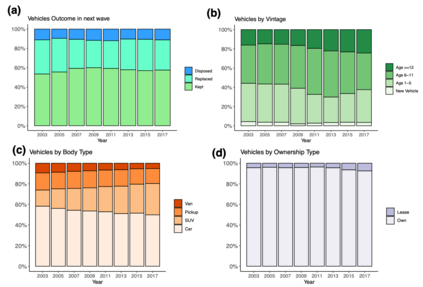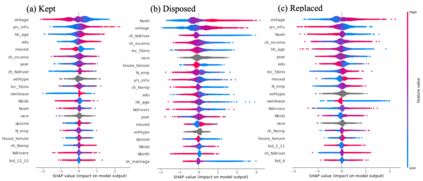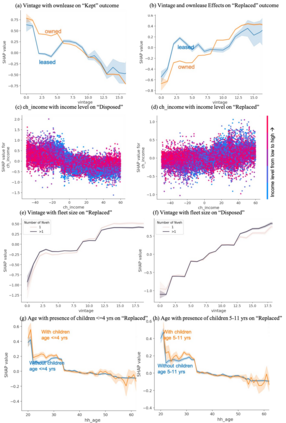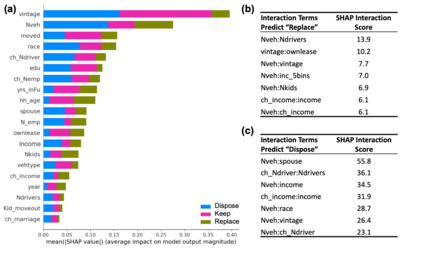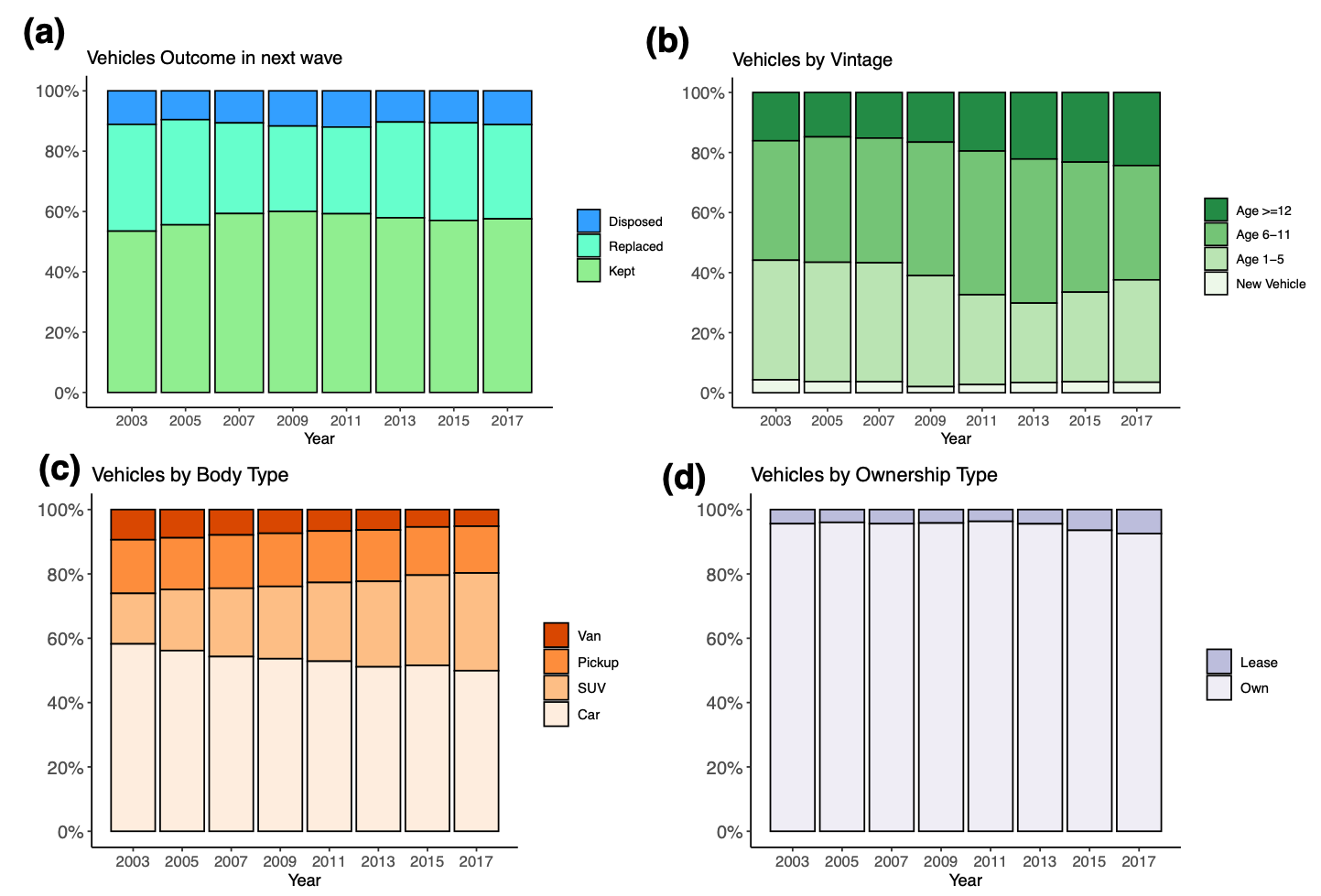What makes you hold on that old car? While the vast majority of the household vehicles are still powered by conventional internal combustion engines, the progress of adopting emerging vehicle technologies will critically depend on how soon the existing vehicles are transacted out of the household fleet. Leveraging a nationally representative longitudinal data set, the Panel Study of Income Dynamics, this study examines how household decisions to dispose of or replace a given vehicle are: (1) influenced by the vehicle's attributes, (2) mediated by households' concurrent socio-demographic and economic attributes, and (3) triggered by key life cycle events. Coupled with a newly developed machine learning interpretation tool, TreeExplainer, we demonstrate an innovative use of machine learning models to augment traditional logit modeling to both generate behavioral insights and improve model performance. We find the two gradient-boosting-based methods, CatBoost and LightGBM, are the best performing machine learning models for this problem. The multinomial logistic model can achieve similar performance levels after its model specification is informed by TreeExplainer. Both machine learning and multinomial logit models suggest that while older vehicles are more likely to be disposed of or replaced than newer ones, such probability decreases as the vehicles serve the family longer. We find that married families, families with higher education levels, homeowners, and older families tend to keep their vehicles longer. Life events such as childbirth, residential relocation, and change of household composition and income are found to increase vehicle disposal and/or replacement. We provide additional insights on the timing of vehicle replacement or disposal, in particular, the presence of children and childbirth events are more strongly associated with vehicle replacement among younger parents.
翻译:是什么使你持有这辆旧车? 虽然绝大多数家用车辆仍由常规的内燃机驱动,但采用新兴车辆技术的进展将关键取决于现有车辆何时从家庭车队中转换出来。利用具有国家代表性的纵向数据集,“收入动态小组研究”,本研究审视了家庭如何决定处置或更换特定车辆:(1) 受车辆特性的影响,(2) 由家庭同时的社会经济和经济特征和(3) 由关键生命周期事件引发。与新开发的机器学习解释工具“树开刀”相结合,我们展示了机械学习模式的创新使用,以扩大传统对车的模拟,既能产生行为洞察力,又能改善模型性性能。我们发现两种基于梯速法的方法,即“CatBoost”和“LightGBMM”是这一问题的最佳机器学习模式。多音后勤模型在车辆更换模型规格后可以达到类似的性能水平。 与新开发的机器学习和多音化逻辑模型都表明,虽然更老的车辆的运算模型都更能让家庭更早、更早的车辆更早地掌握或更早的车龄,但我们更早的车龄家庭更能更早地选择。

